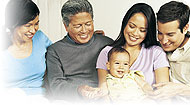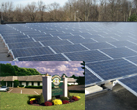Penn Herb Wellness Guide
Vertigo

About This Condition
Vertigo is a sensation of irregular or whirling motion, either of oneself or of external objects.
The word is sometimes incorrectly used as a general term to describe dizziness. The most common form of vertigo is benign positional paroxysmal vertigo (BPPV), in which brief attacks are brought on by certain changes in head position.1 BPPV may be due to a previous head injury, viral infection, and certain drug therapies, although in about half the cases the cause is unknown.2, 3 BPPV tends to resolve without treatment within weeks to months, but may persist for years in some cases.4, 5
People experiencing vertigo should have a complete medical evaluation to determine the cause. Common causes of non-BPPV vertigo include conditions in which there is decreased blood flow to certain areas of the brain, Mnire’s disease, and infection of the inner ear.6, 7 Vertigo may also be a symptom of numerous other conditions,8, 9, 10 including sinusitis, panic attacks, migraine headaches, and problems with metabolism,11, 12 such as hypothyroidism, high blood triglycerides, diabetes, and hypoglycemia.
Symptoms
People with vertigo may have sudden sensations of spinning or whirling motion that may be accompanied by lightheadedness and loss of balance, and less often by sweating, fatigue, nausea, and vomiting.13, 14
Healthy Lifestyle Tips
Head positions that bring on sudden, acute attacks of vertigo, particularly bending the neck back while looking up, should be avoided. In one report, for example, the head position used in salons for shampooing hair was associated with the onset of vertigo.15 According to one authority,16 certain chronic or repetitive body positions may produce painful nodules, called trigger points, in the muscles of the head and neck, which can lead to dizziness and possibly vertigo. These positions include forward bending of the neck as when sleeping on two pillows, backward neck bending as when painting a ceiling, and turning the neck to one side as in some reading positions.17 A healthcare practitioner knowledgeable in postural education can give advice on avoiding such positions.
Holistic Options
Numerous preliminary reports suggest certain “vestibular rehabilitation” exercises may help some cases of vertigo.18, 19, 20, 21, 22, 23 These exercises were also found to be effective in relieving vertigo in two controlled studies,24 including one on BPPV.25 While vestibular rehabilitation exercises may be done at home, initial guidance by a qualified practitioner is necessary.
BPPV appears to be caused by an accumulation of free-floating cell fragments in the fluid of the inner ear.26, 27 Certain manipulation therapy maneuvers, referred to as particle repositioning maneuvers (PRMs), are intended to relocate this debris to a harmless location,28, 29, 30 in order to improve symptoms. Both preliminary31, 32, 33, 34, 35 and controlled36, 37, 38 trials achieved significant improvement in, or elimination of, BPPV using these maneuvers. Most studies report that over 90% of people with BPPV treated one or two times with PRM respond to this treatment, although up to 45% may develop BPPV again within a few years, requiring further treatments.39, 40, 41
Research indicates some cases of vertigo are related to spinal disorders affecting the head and neck.42, 43, 44, 45, 46, 47, 48 Preliminary studies report that certain treatments, such as spinal manipulation,49, 50, 51, 52 physical therapy,53 and combined approaches including manipulation and specific exercise programs,54, 55 result in significant improvement of vertigo symptoms.
Trigger points are thought by most,56, 57, 58 though not all,59 authorities to potentially cause pain and abnormal function in other parts of the body. Trigger points appear to develop as the result of injury, poor posture, structural abnormalities of the leg or pelvis, emotional tension, and other body stressors.60, 61 Also known as myofascial pain dysfunction (MPD), this condition, when it affects certain muscles of the head and neck, has been associated with vertigo in preliminary research.62, 63, 64 Musculoskeletal healthcare specialists and other practitioners can often treat MPD with a variety of natural therapies, including deep pressure massage,65, 66, 67, 68, 69 transcutaneous electrical nerve stimulation (TENS),70, 71 and other approaches,72 but no controlled studies have investigated the effectiveness of these treatments specifically for vertigo.
In a preliminary study of people with migraine headaches, most of whom (83%) also experienced vertigo, a combined and individualized approach using dietary changes, medication, physical therapy, lifestyle changes, and acupuncture resulted in complete or substantial improvement of symptoms in a significant number of participants.73 In addition, a large number of case studies presented in two preliminary reports suggest acupuncture may help to reduce symptoms of vertigo.74, 75 These preliminary studies have yet to be confirmed by controlled clinical trials.
Copyright 2025 TraceGains, Inc. All rights reserved.
Learn more about TraceGains, the company.
The information presented by TraceGains is for informational purposes only. It is based on scientific studies (human, animal, or in vitro), clinical experience, or traditional usage as cited in each article. The results reported may not necessarily occur in all individuals. Self-treatment is not recommended for life-threatening conditions that require medical treatment under a doctor's care. For many of the conditions discussed, treatment with prescription or over the counter medication is also available. Consult your doctor, practitioner, and/or pharmacist for any health problem and before using any supplements or before making any changes in prescribed medications. Information expires December 2025.


